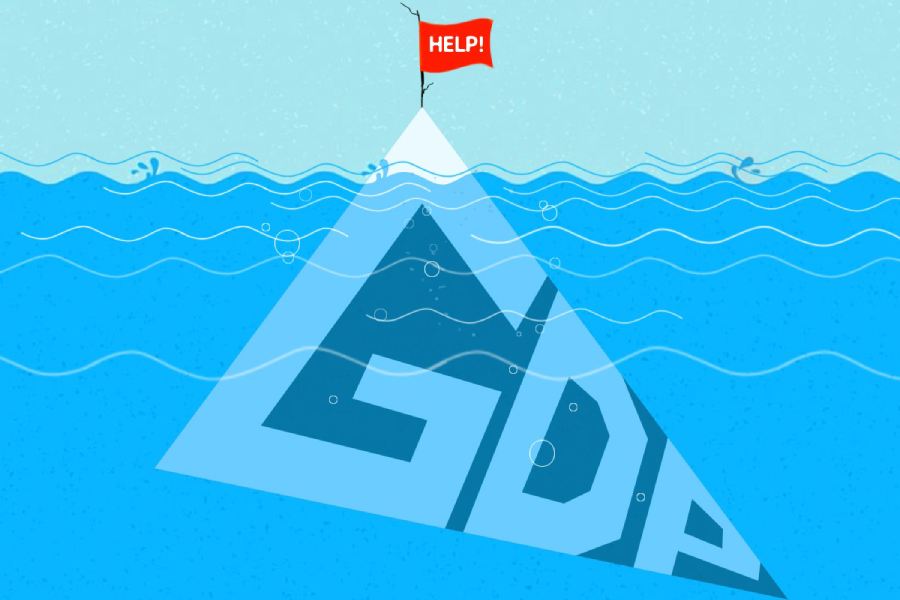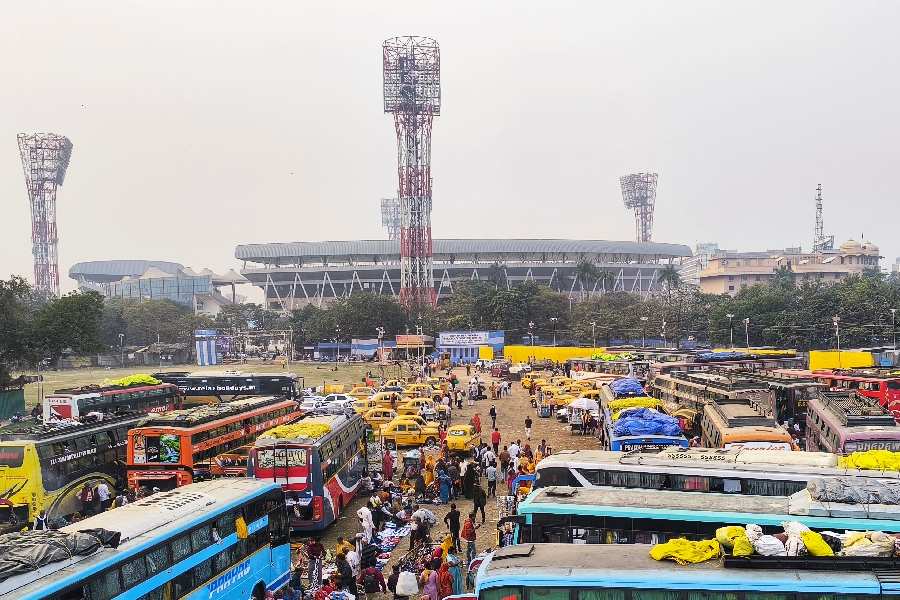 Tuesday, 07 January 2025
Tuesday, 07 January 2025
 Tuesday, 07 January 2025
Tuesday, 07 January 2025
The Integrated Food Security Phase Classification (IPC) system faces significant challenges in accessing critical hunger data, particularly in regions plagued by conflict and government interference.
Both governments and rebel groups often obstruct the IPC to prevent famine declarations, which could draw international attention and pressure. Meanwhile, donor countries are frequently slow to respond to famine warnings issued by the IPC, exacerbating the crisis.
On the ground, relief groups struggle with inadequate resources, unable to provide food for everyone in need or implement a consistent method to prioritize those most at risk of starvation. In one instance, tensions over the distribution of food aid escalated dramatically when a man, frustrated by his clan’s limited share, fired shots at humanitarian workers, underscoring the desperate and volatile conditions in famine-stricken areas.
Nicholas Haan, an American then working on the aid effort for the United Nations, had an idea: Create an evidence-driven system that objectively classified acute food insecurity and engaged both international experts and Somali leaders so all agreed on how to manage the crisis.
The idea worked, Haan said. Locals helped gather evidence for the analysis. That led to greater acceptance of tough decisions on where to send aid, he said.
The process Haan and other aid workers sketched out in about a month eventually evolved into the Integrated Food Security Phase Classification, or IPC, a global partnership that’s a linchpin in today’s vast system for monitoring and alleviating hunger. It is designed to sound the alarm about developing food crises so organizations can respond and prevent famine and mass starvation.
But as hunger crises sweep parts of the developing world this year, the technocratic assumptions on which the IPC warning system rests are colliding with messy and brutal realities.
In March, the IPC warned that famine was imminent in northern Gaza. In August, it said famine had taken hold in part of Sudan’s North Darfur state.
Nevertheless, U.N. officials said in early November thatthe entire population of northern Gaza was at “imminent risk of dying from disease, famine and violence.”
In Darfur, little aid has reached Zamzam, a famine-stricken camp for displaced people, and its estimated 500,000 residents are at risk of dying of hunger-related causes.
Critically, the IPC is struggling to access the data it needs to conduct informed analyses.
With most of the world’s food crises being driven by conflict, it has become increasingly difficult to gather the information the IPC requires to classify vulnerable nations on its five-stage acute food-security scale.
In Gaza, Israeli bombing and restrictions on movement have impeded efforts
to collect statistics on malnutrition, deaths unrelated to trauma, and other essential data. In Sudan, violence, military roadblocks, bureaucratic obstruction and a telecommunications blackout have disrupted efforts to test for malnutrition, count deaths and survey people about their access to food.
Another frequently false assumption underpinning the IPC’s work: The world will respond promptly to its warnings. In reality, significant aid sometimes comes after the starving are already dying in droves.
Perhaps the system’s greatest weakness – one its creator Haan points to himself – is the premise that governments in hunger-stricken countries will cooperate fully with the IPC, the U.N. and other outside helpers.
Government involvement can be the system’s greatest strength, Haan said, empowering countries to solve their own problems. But Reuters found that giving local officials a seat at the table – as the IPC usually does – also can pose a conflict of interest, positioning them to undermine the hunger monitor’s work and harming the people it is meant to protect. This is especially true in cases of civil war, when a government’s military strategy can trump humanitarian goals.
“It inadvertently gives a veto to any belligerent party that does not want a famine declared,” said Jeremy Konyndyk, president of the humanitarian relief group Refugees International and former director of the Office of U.S. Foreign Disaster Assistance in the U.S. Agency for International Development.
In three countries now suffering severe food crises, Reuters found that governments or rebels have blocked or falsified the flow of data to the IPC or have tried to suppress its findings.
In Ethiopia, the government disliked an IPC finding that 350,000 people were experiencing catastrophic acute food insecurity – so it stopped working with the IPC. In Yemen, Houthi rebels commandeered the IPC’s research process and exaggerated a food crisis to try to get more aid. In Sudan, the government tried to invalidate a survey that showed high rates of acute malnutrition among children. Ethiopian and Sudanese officials told Reuters the IPC analyses were flawed. Houthi representatives said their research documented a legitimate humanitarian crisis.
One reason for such sabotage: Governments fear the international stigma and domestic political blowback from being unable to perform one of their most basic duties – feeding their own people.
“Countries don't want to be told they're presiding over a famine,” said Mark Lowcock, who coordinated U.N. emergency relief efforts from 2017 to 2021. “It does not win you international kudos and admiration. So these state entities try to wiggle and weave to avoid having that exposed.”
'YOUR HANDS ARE TIED'
The IPC acknowledges that the impediments sometimes slow its work and delay alerts seeking urgently needed resources for places with extreme hunger crises. That is one reason for new protocols the IPC announced Nov. 22.
IPC Global Program Manager Jose Lopez, in response to questions about the warning system’s shortcomings, said the IPC will now require that its technical experts take over government-headed analyses within two weeks of when evidence points to famine and there are exceptional circumstances, such as government interference or delay. The IPC said the change is intended to ensure timely, unbiased reports during crises, in hopes of halting mass starvation and preventing widespread deaths.
In October, the IPC also issued new guidance on how analysts should incorporate conflict conditions into their reports. The guidance cites the IPC’s failure towarn early enough that South Sudan seemed headed for famine in 2020.
Armed militias were fighting over resources and historic grievances, displacing tens of thousands of people. Analysts hadn’t adequately factored in the impact of the organized violence on food security, the document says. The guidance directs analysts to consider ways conflict can drive food insecurity, such as cutting access to food, causing prices to skyrocket and disrupting crop production.
Reuters’ examination of how the IPC operates and whether it is an effective alert system is based on internal IPC documents and communications, meeting minutes of humanitarian organizations and data on aid delivery, nutrition and donations. Reporters also interviewed dozens of aid workers, government officials, IPC analysts and academics who study food security.
Many of the problems plaguing the IPC are beyond its control, from civil war and other conflicts that obstruct data collection to tardy reactions to its forecasts by aid donors and distributors. The IPC says its hunger analyses help direct $6 billion in annual aid to the more than 35 nations it monitors. But $15 billion of requests for food security and nutrition globally went unmet in 2023, according to U.N. data that tracks the flow of aid.
Martin Griffiths, who stepped down as U.N. humanitarian relief chief in June, said shortages of data, money and access to areas where people are starving has created a situation in which “your hands are tied behind your back from the beginning.”
The U.N.’s own internal weaknesses also can hamper relief efforts.
In Ethiopia, massive amounts of aid from the U.N.’s World Food Program (WFP) were diverted, in part because of the organization’s lax administrative controls.
An internal WFP report on Sudan identifies a range of problems in the organization’s response there, including an inability to respond adequately to the crisis, missed funding opportunities and what it describes as “anti-fraud challenges,” Reuters reported Wednesday.
Today, the IPC is an independent body funded by Western nations and overseen by 19 large humanitarian organizations and intergovernmental institutions. Though its duties are far-reaching, its resources are tight: It has just 60 paid staff and an $8.5 million annual budget. It relies on hundreds of analysts from governments and partner agencies to produce reports on hunger and acute malnutrition in Africa, Asia, Latin America and the Middle East.
IPC reports rank areas for acute food insecurity on a one-to-five scale that slides from minimal to stressed, crisis, emergency and famine.
In each country, a “technical working group,” usually headed by the national government, analyzes data, classifies areas on the IPC scale and issues periodic reports. Rather than gathering its own data, the IPC relies on the WFP, a multi-billion-dollar global distributor of food aid, and other relief organizations and government agencies to provide it. When famine is in play, the group’s analysis often gets another layer of scrutiny – from the IPC’s five-member Famine Review Committee, which vets and verifies the finding.
The IPC’s hunger analyses require rigorously examining data on factors scientifically linked to food security, such as crop yields, food prices and malnutrition.
Although those uniform standards and technical rigor are important, it is essential that they don’t become a barrier or slow the process of delivering aid, said Deepmala Mahla, chief humanitarian officer for the relief organization CARE, an IPC partner.
“The single largest driver of hunger in the world is conflict,” Mahla said. “This means that people who are most desperately in need are in the hardest-to-reach areas. The single most pressing IPC challenge is the difficulty in collecting mortality and nutrition data from these areas.”
In Gaza, Israel’s 13-month military campaign has displaced an estimated 1.9 million Palestinians, many of them multiple times. Bombings, movement restrictions and evacuations ordered by Israel’s military block access to health care and keep aid workers from reaching people in need.
All this makes it extremely difficult for the IPC to get data for two of the statistics it seeks for a famine determination – malnutrition and hunger-related deaths, aid workers told Reuters.
The IPC's preferred method for assessing acute malnutrition levels is to measure children’s weight and height. But Israeli bombing has destroyed many of Gaza’s hospitals and clinics – and along with them, scales and height boards. Humanitarian organizations instead trained health workers to measure children’s upper arms.
The IPC relied on such measurements in October, when it reported that acute malnutrition rates in Gaza were 10 times higher than before the conflict but still below its threshold for deeming an area in famine. But the data was collected in August and September, before conditions worsened in the north, where Israel is conducting intense attacks. Since October, health workers have been unable to get there to collect malnutrition data.
The conflict also has imperiled the data collectors themselves, who often are aid workers. At least 337 aid workers have been killed in Gaza since the Israeli operation began, the most ever in a single crisis, according to the U.N.
In November 2023, a few weeks before IPC analysts began working to gauge whether Gaza was in famine, a convoy carrying staff and family from Médecins Sans Frontières (Doctors Without Borders, or MSF) came under fire, killing two. MSF said the convoy was clearly marked with the aid group’s logo and said all evidence pointed to a deliberate attack by Israel.
So worried was the IPC about aid workers’ safety in Gaza that it set up anonymized Zoom calls to conduct its work, six participants told Reuters. Some of the IPC analysts worked for humanitarian organizations on the ground in Gaza, and the IPC feared they could be targeted by Israel.
So each day, a facilitator would conceal the analysts’ identities before letting them into the virtual meeting room. Instead of screen names, they had numbers: Analyst 1, Analyst 2, Analyst 3. All kept their cameras off.
The Israel Defense Forces did not respond to Reuters questions about the MSF incident, attacks on aid workers or the IPC’s efforts to protect its analysts. COGAT, the Israeli government body that oversees aid to Gaza, told Reuters that in recent months a new Israeli government board has begun focusing on the safety of humanitarian workers. It “facilitates efficient and rapid information sharing” to help them distribute aid safely and effectively, COGAT said.
The IPC did not have a group of analysts working in Gaza when Israel’s military operation began. So the IPC set up an ad hoc group, headed by its own staff rather than local government representatives. The arrangement was meant to protect the group’s neutrality, two IPC sources said.
Almost everywhere else the IPC operates, a government official heads the working group. The IPC works on the assumption that governments want to get aid to the starving.
But Reuters found that several governments or ruling factions sought to manipulate or suppress data collection for IPC analyses. They have used the IPC’s own rigorous requirements to exclude crucial evidence of famine and delay the publication of reports warning about the risk of famine.
In Sudan, the government sought to suppress a key malnutrition and mortality study that helped show that the huge displaced persons camp called Zamzam was in famine.
The camp formed in 2004, during attacks by the Sudanese government and Janjaweed-aligned militia that resulted in ethnically motivated mass killings. It now shelters about 500,000 displaced people.
MSF randomly selected and measured the upper arms of 659 children there in January. The aid group found almost 25% to be acutely malnourished – higher than the IPC’s 15% threshold for famine. It also found alarmingly high mortality rates among the wider population.
At the end of March and into early April, the group screened another 47,000 children and found one of every three malnourished.
Some children died while waiting in line to be screened, said Seham Abdullah, a 28-year-old doctor who worked on the survey and is still treating patients there. Others died on the way to the clinic, she said.
“The children are sent away because there are no beds,” Abdullah told Reuters. “Then they come back later and their conditions are worse.”
MSF treatment for malnourished children has been hindered by sporadic aid shipments. For a time this fall, it was unable to treat 5,000 children with acute malnutrition because warring parties were preventing supplies from reaching the camp.
MSF’s child nutrition and mortality survey from January gave the IPC valuable data points as it worked to determine if the area was in famine. A famine analysis considers people’s access to food, along with malnutrition and mortality rates.
But the Sudanese government – engaged in a civil war with the Rapid Support Forces (RSF) and adamantly opposed to a famine declaration for strategic reasons – rejected the study.
Ibrahim Khatir, head of the North Darfur health ministry, told Reuters in August
that MSF’s findings were exaggerated to drum up funding.
Aid organizations “do it as advertising so they can get more support,” he said. “So they can get nice houses, cars, salaries, they rely on the suffering, the hunger.”
In response to Khatir’s remarks, MSF noted the statistical rigor of its analysis and called its findings “unambiguous.”
“The plight of Sudanese people, only receiving a trickle of humanitarian aid at best while trapped by hunger and war, is nothing short of outrageous,” Michel-Olivier Lacharité, MSF head of emergency operations, said in an emailed statement to Reuters.
In June, Sudan’s ambassador to the U.N., Al-Harith Idriss al-Harith Mohamed, criticized outsiders’ efforts to declare famine in Sudan, which he called “a narrative whereby famine can be dictated from above.” A famine declaration would increase pressure on the government to open a key aid-shipment border crossing from Chad, which he called a “Pandora’s box” that would open up arms smuggling to the RSF.
Sudan’s agriculture minister, Abubakr al-Bushra, raised similar objections in a letter later that month to Lopez, the IPC chief. Lopez replied that the IPC could not factor Sudan’s military concerns into its analysis.
“The issues you raised about the risks of diversion of humanitarian assistance and of a potential conflict expansion go beyond the purpose and objectives of a Famine Review,” Lopez said in the July 4 letter, seen by Reuters.
After MSF published its nutrition and mortality findings on Zamzam in February, it took the IPC six months to alert the world that famine was happening there. Over that time, the average number of graves dug daily in Zamzam grew.
Reuters used high-resolution optical and radar satellite imagery to examine activity in seven Zamzam graveyards. The images reveal an average rate of at least 1.6 new graves added each day in March.
By November, that rate had grown to at least 4 each day. The analysis is likely an undercount because it is impossible to know if the images reveal every burial, especially small children’s graves. In February, MSF estimated that one child was dying every two hours in the camp.
The news agency’s use of satellite imagery is an example of new types of data that could be incorporated into the IPC’s analyses, Haan said. The Famine Review Committee cited Reuters’ work as one piece of evidence in its August famine finding. The IPC is now working with Yale University’s Humanitarian Research Lab to explore ways of using similar analyses in its reports, Haan said. It also is exploring machine-learning techniques, which rely on computer models to predict outcomes.
Zamzam’s misery continues. The camp has come under intense shelling this week, a volunteer worker and an aid organization told Reuters.
Sudan isn’t the only place where the IPC ran into intense government resistance. In June 2021, the IPC analyzed the risk of famine in Ethiopia’s Tigray region, where paramilitary forces were then in the midst of violent conflict with government forces. The hunger monitor found that more than 350,000 people were in Phase 5, or catastrophic conditions.
Ethiopia’s central government challenged the IPC’s methodology and conclusions, but the IPC published its analysis anyway. It added a disclaimer: “This report has not been endorsed by the Government of Ethiopia.”
The government reacted furiously. It “perceived the publication as unilateral and unauthorized,” a senior government official, speaking on condition of anonymity, told Reuters. The government later expelled seven senior U.N. officials and blocked further IPC access in Ethiopia.
No IPC analyses have been performed in Ethiopia since, although the government official said talks recently began in an effort to improve relations between the government and the IPC.
Strong-arming of the IPC and the broader humanitarian relief system became severe in Yemen in 2023, when Houthi rebel forces who control the country’s north tried to exaggerate a hunger crisis to draw international humanitarian aid, four sources with knowledge of the situation told Reuters. Houthi rebels have been accused of massive aid diversion there.
The Houthis’ humanitarian arm handpicked data collectors in 2023 to conduct surveys to assess the population’s access to food, according to three sources from the U.N.’s WFP.
Reuters was unable to learn specifics about how the data was collected.
The Houthis then used the data to press the IPC to say that many urban areas were experiencing food emergencies when in fact people had access to food and markets, said an IPC working group member, who spoke on condition of anonymity. The person said that Houthi officers threatened IPC members with consequences if they did not classify areas as the Houthis wanted. Houthi security forces have arrested and held incommunicado dozens of U.N. staff and employees of nongovernmental organizations.
In a written response to questions from Reuters, the Houthi Supreme Council for the Management and Coordination of Humanitarian Affairs (SCMCHA) said the humanitarian crisis in Yemen is an “undisputed fact and not fabricated.”
“The data collection process was carried out in the required manner according to the standards agreed upon with the World Food Program,” the SCMCHA said, noting that half of the data collectors were selected by the WFP.
It denied diverting aid and threatening aid workers and said the arrests of U.N. staff were lawful.
“These are false and untrue allegations,” the statement read. “We completely reject them. No pressure was exerted on the committee.”
A global IPC team reviewed the Houthi-collected data and found that it overstated hunger levels, three IPC sources told Reuters. The IPC decided not to publish the Houthi-led analysis. And because of security concerns, it did not publish its own evaluation, either, the sources said.
Even when the IPC’s work is unhindered and timely, donor countries often respond sluggishly to warnings of a food crisis. And conflict, closed borders and movement restrictions make it difficult to deliver aid. That can leave humanitarian agencies with too little money to keep hunger from worsening.
The world supplied only 39% of the aid that agencies requested in 2023 to alleviate food insecurity and improve nutrition, according to U.N. data. This year is on track for only slightly better results.
Government officials from seven donor countries told Reuters they take note of the IPC’s reports, but they also weigh budgetary and political priorities, climate predictions, logistical hurdles to delivering aid, and the actions of other donors.
Germany would pay attention to an IPC Phase 4 or Phase 5 determination, said Andreas von Brandt, Berlin’s ambassador to the U.N. in Rome. But it wouldn’t guarantee a response. “Our funds are limited,” von Brandt said. “Even in the best years we wouldn’t have all the funds to suffice."
The first famine the IPC identified – in 2011 in Somalia – illustrates the devastating toll when aid arrives too late.
Drought and armed conflict among militant groups fighting for control of the country’s south led to mass displacement and dire food shortages from 2010 through 2012. IPC analyses repeatedly warned of an imminent risk of famine.
Yet donors balked at sending relief to a region controlled by militants the U.S. had labeled as terrorists. Humanitarian aid to the afflicted area dropped by half from 2008 to 2011, as aid workers came under attack.
Only after an IPC analysis found the area in famine in July 2011 did donor nations and organizations respond with a deluge of aid. By then, much of the damage had already been done.
It turned out to be one of the deadliest famines of the 21st century. An estimated 258,000 people – most of them children under 5 – died from hunger-related causes, according to a 2013 analysis commissioned by the U.N. Food and Agriculture Organization. Almost half died before famine was even declared, the study found.
The geopolitical roadblocks and the failure of the various arms of the humanitarian aid system to work together to prevent starvation frustrates Haan, 20 years after he came up with his idea to classify hunger.
"All of that comes crashing down on the woman and the girl and the young boy in Zamzam who can't eat tonight, and there's no reason why they shouldn't be able to eat tonight, no reason at all,” he said.







